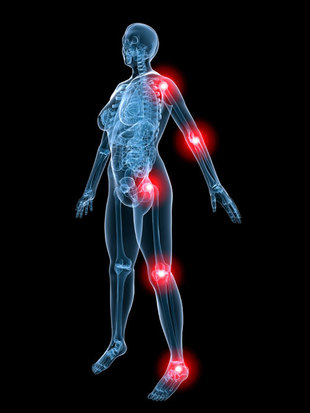The Science Behind Our Success
Training Theory
The theory behind the Tekulve Acceleration Sports Training™ Program is based on the principle of specific adaptation to imposed demand, or the Said Principle. To that end, specific muscle fiber types and specific metabolic pathways are targeted for development. Also, sprinting biomechanics and neuromuscular coordination must be addressed in the development of speed.
Specific Metabolic Pathways

The primary energy system of any activity can be estimated on the basis of its performance time. In other words, the energy sources for a given activity are time dependent. In human muscle, the following three metabolic pathways are involved in the production of energy:
Both the lactic acid and the Phosphagen systems are anaerobic, very fast acting, and limited in the amount of energy they can supply. Since the goals of the Acceleration Program are geared towards the development of maximum speed, the Lactic Acid and Phosphagen systems are being targeted. This is accomplished through a series of high intensity, short duration training bouts. Therefore, the bouts range between four and thirty seconds in order to specifically stress the Phosphagen and Lactic Acid systems. Tekulve Acceleration Sports Training Programs can also be modified for distance runners.
- Aerobic System: This system supplies the majority of the energy system for activities lasting longer than two minutes.
- Lactic Acid System: This energy system predominates for efforts lasting between ten seconds and two minutes.
- Phosphagen System: This system functions exclusively for short efforts of less than ten seconds.
Both the lactic acid and the Phosphagen systems are anaerobic, very fast acting, and limited in the amount of energy they can supply. Since the goals of the Acceleration Program are geared towards the development of maximum speed, the Lactic Acid and Phosphagen systems are being targeted. This is accomplished through a series of high intensity, short duration training bouts. Therefore, the bouts range between four and thirty seconds in order to specifically stress the Phosphagen and Lactic Acid systems. Tekulve Acceleration Sports Training Programs can also be modified for distance runners.
Specific Muscle Fibers
Human muscles are composed of the following types of muscle fibers-
The Tekulve Acceleration Sports Training™ Program targets the fast twitch and undifferentiated fibers. An increased intensity of contraction leads to an increased recruitment of fast twitch fibers. This is also accomplished through the performance of high intensity, short duration training bouts. This increased intensity of contraction can be facilitated by the stretch reflex, which is activated when a muscle is placed on a slight stretch. The Acceleration Program is designed to utilize the golgi tendon and stretch reflex mechanism to their full extent. For example, when running on an incline, foot-strike is made in a position of dorsiflexion, and the weight of the athlete is supported by the lower leg, thus placing the gastrocnemius/soleus complex in a stretched position. This is precisely what is required to activate the stretch reflex. This in turn generates a more forceful contraction at toe off. Moreover, the stretch reflex is activated in the hip flexors through the extended drive phase associated with the incline running. Also, additional loading of the hip flexors and quadriceps can be accomplished with the Sprint/Sportcord.
- Slow Twitch Fibers: Characterized by slow contraction time, low anaerobic capacity and high aerobic capacity making this fiber type suited for low power output activities.
- Fast Twitch Fibers: Characterized by fast contraction time, high anaerobic capacity and low aerobic capacity, making this fiber best suited for high power output activities.
- Undifferentiated Fibers: Characterized as being intermediate or interconversion and not being directly associated as fast oxidative- glycolytic or fast glycolytic. New, exciting research is being completed on this specific muscle type.
The Tekulve Acceleration Sports Training™ Program targets the fast twitch and undifferentiated fibers. An increased intensity of contraction leads to an increased recruitment of fast twitch fibers. This is also accomplished through the performance of high intensity, short duration training bouts. This increased intensity of contraction can be facilitated by the stretch reflex, which is activated when a muscle is placed on a slight stretch. The Acceleration Program is designed to utilize the golgi tendon and stretch reflex mechanism to their full extent. For example, when running on an incline, foot-strike is made in a position of dorsiflexion, and the weight of the athlete is supported by the lower leg, thus placing the gastrocnemius/soleus complex in a stretched position. This is precisely what is required to activate the stretch reflex. This in turn generates a more forceful contraction at toe off. Moreover, the stretch reflex is activated in the hip flexors through the extended drive phase associated with the incline running. Also, additional loading of the hip flexors and quadriceps can be accomplished with the Sprint/Sportcord.







